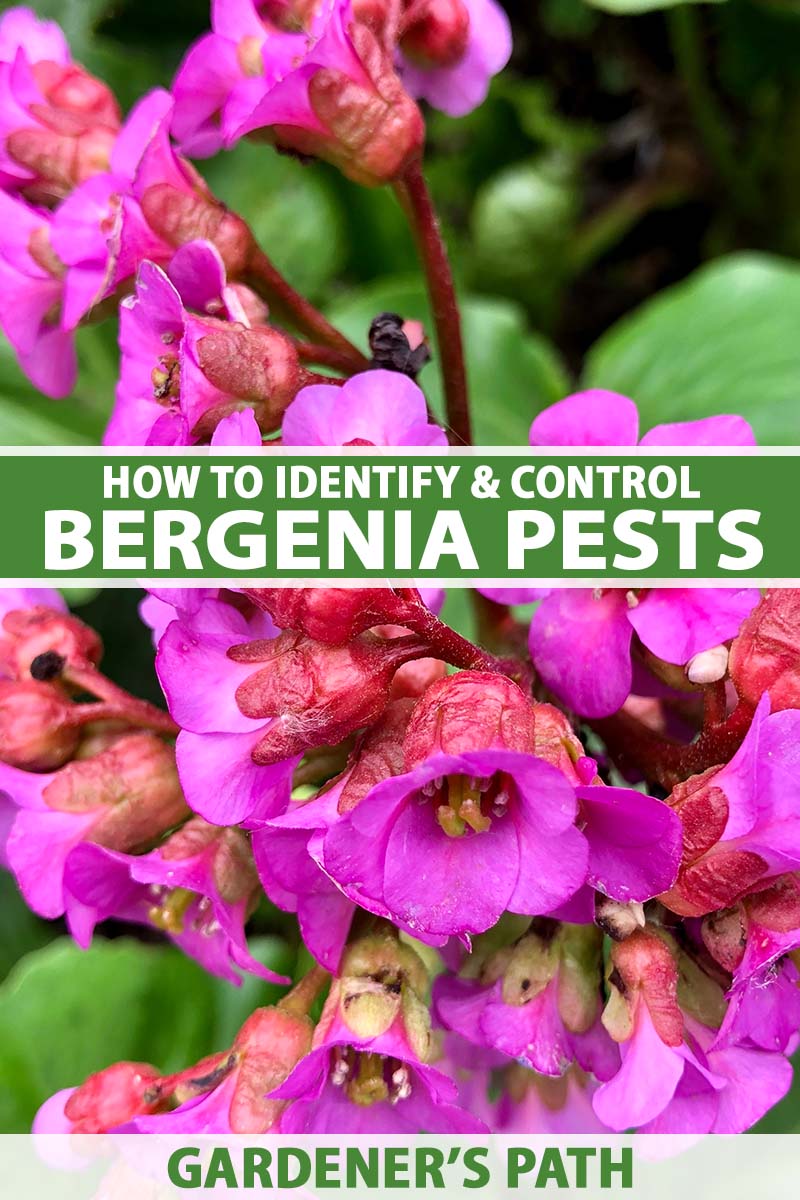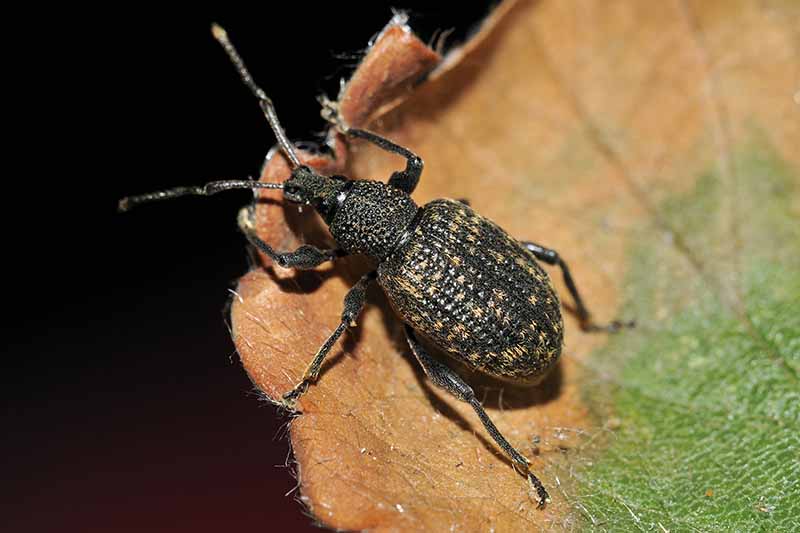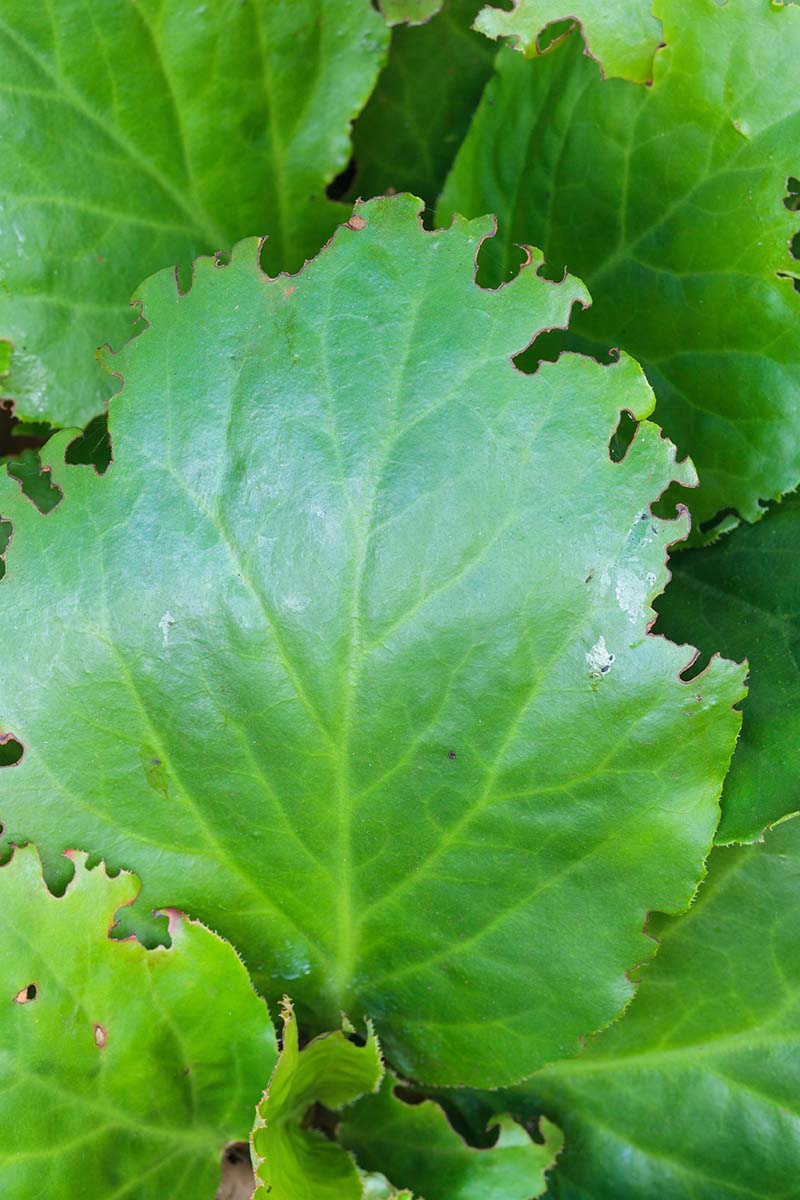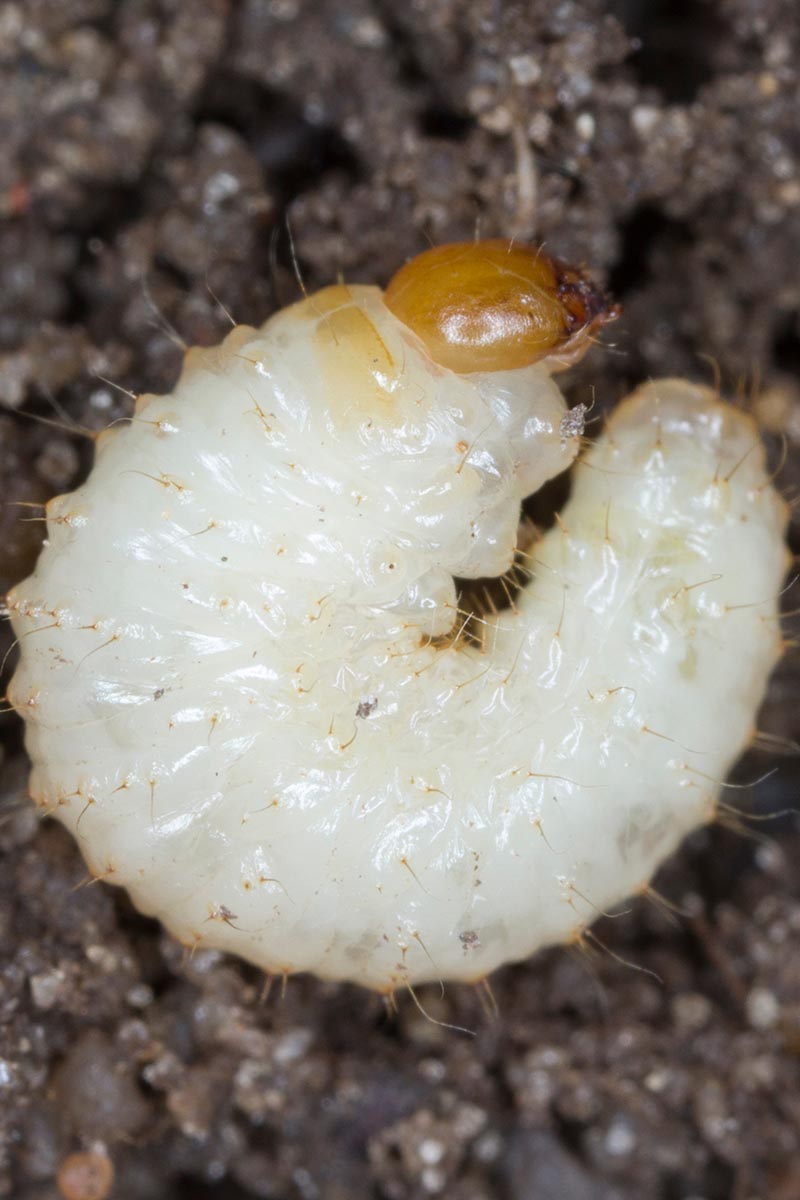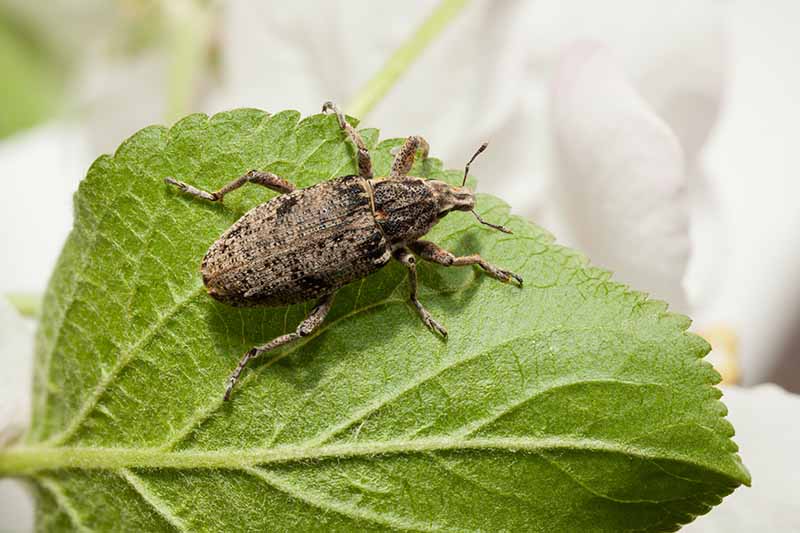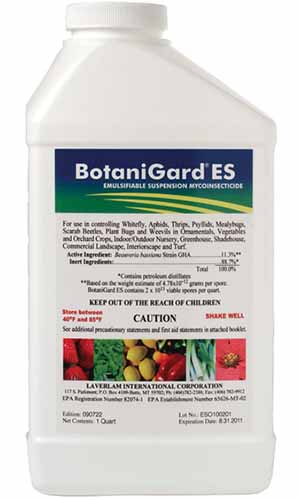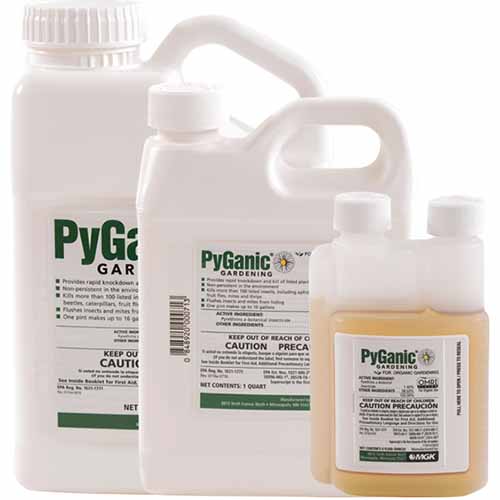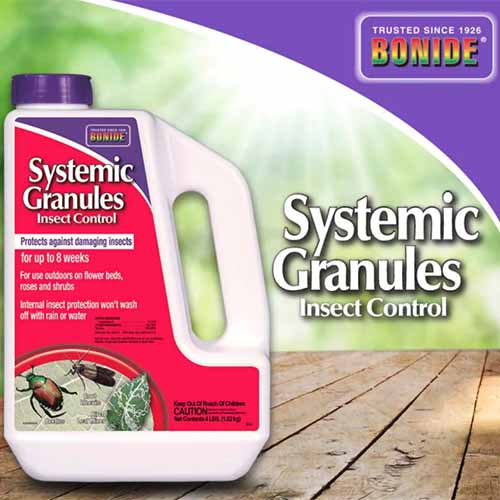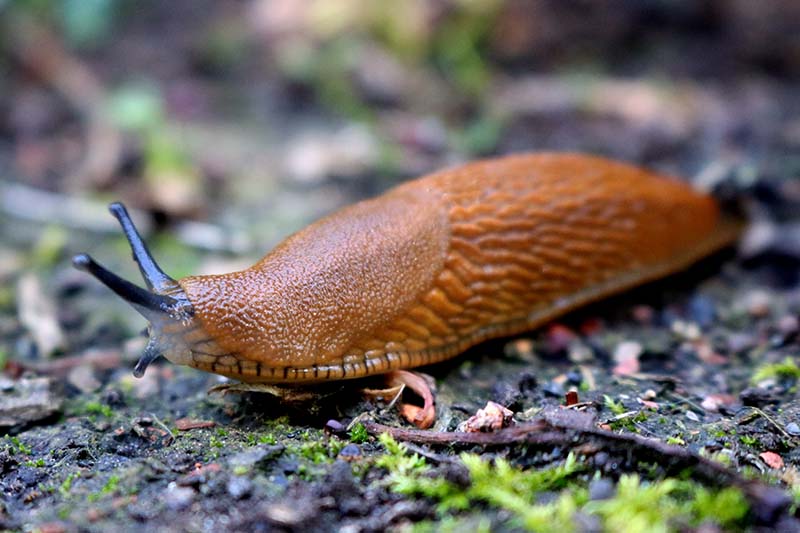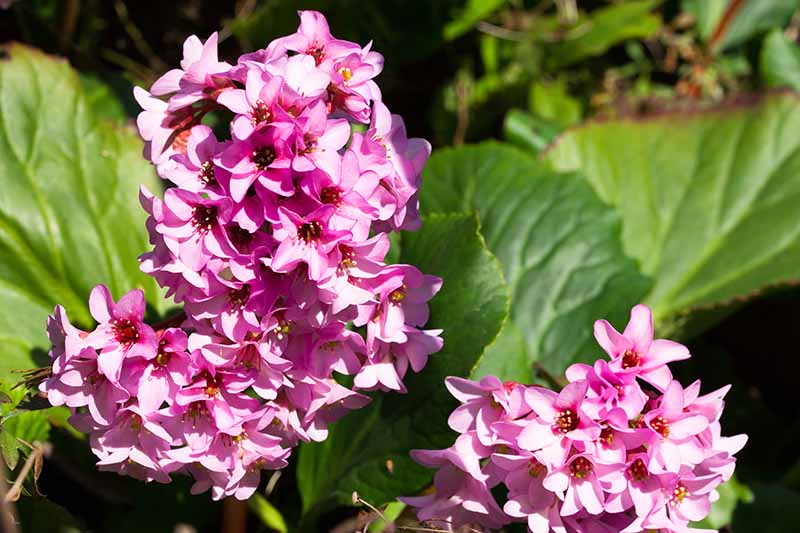While bergenia is generally resistant to pests, there are two exceptions: weevils, especially black vine weevils, and gastropods. We link to vendors to help you find relevant products. If you buy from one of our links, we may earn a commission. Slugs and snails are also nocturnal creatures that can cause damage. In this article, we will cover what you what to look for and how to protect your bergenia plants from these pests.
Black Vine Weevils
It figures that, out of a genus of more than 1,500 species of weevils, the one that feeds on bergenia (Otiorhynchus sulcatus) is known for being the most destructive. This type of weevil also favors rhododendrons, camellias, primroses, and euonymus, and it may opt to feast on almost 100 other kinds of plants as well! These insects are native to Europe, but they have had no problem colonizing the US and southern Canada.
Symptoms
Your first clue that these pests are active in your garden is typically going to be visible notches on your bergenia leaves. Most gardeners like to trim back the damaged foliage in the spring. While this damage is often minor, the populations of these insects can build up over time. Particularly true since the weevils cannot fly, they typically stay in the same place and reproduce. (Asexually!) Bergenia’s leaves are evergreen, so any damage to them becomes magnified as infestations increase. Although the notches on the leaves are the most easily observable symptom, the larvae that feed on the roots can also damage the plants. This usually manifests as a general decline in plant health, and is more difficult to diagnose. If you examine the soil around infested plants in the spring or fall, you will find larvae that are about half an inch long, golden colored, and shaped like a C. Though this is usually not a problem with bergenia, severe infestations can completely destroy the roots, and ultimately kill the plants.
How to Control the Adults
The adult weevils, all of which are female, hide in the soil or debris at the base of the plants during the day, and come out at night to feed on the leaves. You can find them after dark just by shining a flashlight on your plants. The 3/8-inch-long black weevils have pronounced snouts and black bodies. This makes it easy to find them, so you can pluck them off the plants and put them in a bucket of soapy water. Another way to catch them is to place a pizza box or some other kind of corrugated cardboard around the plants that are infested. Leave it overnight, then just throw the cardboard with the weevils out in the morning. If your plants are inundated with these weevils, there are several biological and chemical controls that you can use. You have several options to kill the adult black vine weevils by using organic treatments as well.
Pyrethrins
These chemicals are derived from chrysanthemums, and many formulations of them are labeled as organic. BotaniGard ES The primary insecticidal fungus used commercially is Beauveria bassiana, which is available from Arbico Organics as BotanicGard® ES, along with other formulations. The fungus comes in a solution that you can spray on your plants weekly.
How to Control the Larvae
These weevils overwinter as partially developed larvae in the ground and feed on roots – the fine ones in the fall, and larger roots in the spring. PyGanic Gardening PyGanic Gardening, available from Arbico Organics, is effective against weevils. Follow the instructions on the label to dilute the solution, and spray it on affected plants. They can be a particular problem in container plantings, since the growth of the roots is restricted. However, this time spent underground provides a golden opportunity for the gardener to control them with beneficial nematodes. Add the nematodes to water as indicated in the directions, and then pour over the soil. The nematodes will seek out and kill the grubs. NemaSeek SK Beneficial Nematodes This product is composed of Steinernema kraussei, a species of nematode that is particularly effective at cooler temperatures. Treat the plants in early fall, before the grubs become too large. This treatment will be the most effective if the soil is moist at the time of application, and then kept that way for four to five days. You can learn more about how to use beneficial nematodes in our guide. Reapply every eight weeks. You can buy this compound from the Home Depot in the form of Bonide Systemic Insect Control Granules. Bonide Systemic Insect Control Granules Follow the instructions on the label, and add the granules to the soil. Then dig them into the surface of the soil, and add water to move the insecticide into the soil. The roots will absorb the chemical, and transport it throughout the plant. When the larvae feed on the plants, they will ingest the imidacloprid.
Slugs and Snails
If you thought the black vine weevil larvae were slimy, things are about to get even slimier with the dreaded slugs and snails that may be paying a visit to your garden. While slugs and snails don’t tend to mow bergenia to the ground like they do with so many other plants, they can cause occasional problems for these beauties. Damage is most likely to occur on older leaves. Watch for jagged holes in the leaves and trails of slime. Removing any decaying foliage will greatly limit the appeal of the plants to slugs and snails, while improving the look of plants for human visitors to your garden. If your bergenia is plagued by one or both of these slime-mongers, we have a whole guide devoted to banishing slugs and snails. In this case, you can prevent an infestation by removing the older leaves in the spring. If you do have slugs or snails in your bergenia plants, you can hand pick them or apply diatomaceous earth around the plants. Even if your plants are infested with black vine weevils, it can take years for the populations to build up to the point where they cause severe damage. And you can easily avoid slugs and snails with routine garden cleanup. All in all, bergenia really is a low maintenance plant that is resistant to most pests. Have you managed a black vine weevil or slug infestation in your bergenia plants? Or have yours been pest free so far? Let us know in the comments section below! And for more information on growing bergenia in your garden, check out these guides next:
How to Grow and Care for Bergenia25 of the Best Bergenia Cultivars for the GardenHow to Identify and Treat Common Bergenia Diseases
